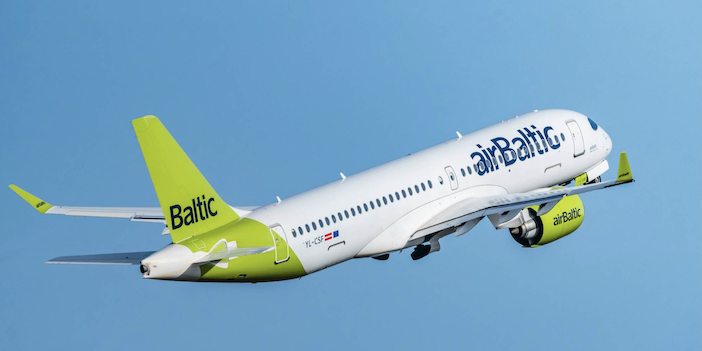airBaltic, the flag carrier airline of Latvia, has conducted a certification test flight to evaluate the use of SpaceX’s Starlink high-speed internet service aboard its Airbus A220-300 fleet. During the flight, which departed from the airline’s home base in Riga, Latvia, a crew tested both the Starlink aero terminal and the internet connection quality, as part of airBaltic’s work towards obtaining the necessary certification for Starlink from the European Union Aviation Safety Agency (EASA).
airBaltic plans to equip its entire all-A220-300 fleet with Starlink. The airline currently operates 49 A220-300 aircraft, with plans to operate a fleet of 100 A220-300s by 2030. airBaltic aims to provide every passenger with seamless, high-speed internet access from boarding to landing, without the need for logins or complicated setups.
Martin Gauss, president and CEO of airBaltic, said of the flight: “This is a game-changer in the future of air travel, and the test flight brings us one step closer to revolutionising the travel experience for our passengers. We are thrilled to lead the way in Europe and be the first airline in this region to offer Starlink’s reliable, high-speed internet for free.”
“We are grateful to work with the Starlink team during this transformative journey. Engineered by SpaceX, Starlink is the world’s first and largest satellite constellation using low-Earth orbit [LEO] that will provide airBaltic passengers the fastest in-flight internet. With one of the youngest and the most modern fleets in the European skies, introducing Starlink onboard our Airbus A220-300s is the next logical step for airBaltic,” Gauss added.
airBaltic is working with Starlink to secure the necessary Supplemental Type Certification (STC) for the service, which will need to be approved by EASA. The airline expects to begin installing Starlink on its single-type fleet of Airbus A220-300s in Q1 2025.
Starlink began serving the commercial aircraft sector in 2024, Starlink providing fast speeds and low latency by using satellites in low-Earth orbit, positioned over 65-times closer than geostationary satellites. This approach allows Starlink to deliver up to 500Mbps with a low-latency connection, enabling activities such as online gaming, the use of virtual private networks (VPNs), and other high-bandwidth tasks.





